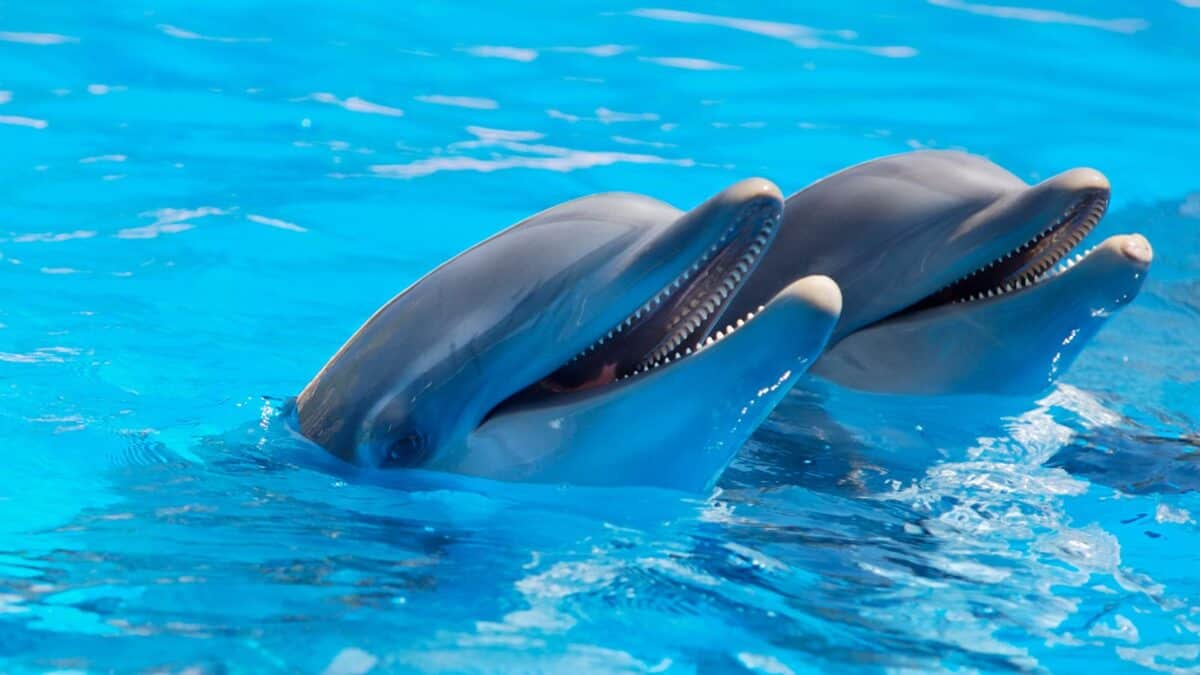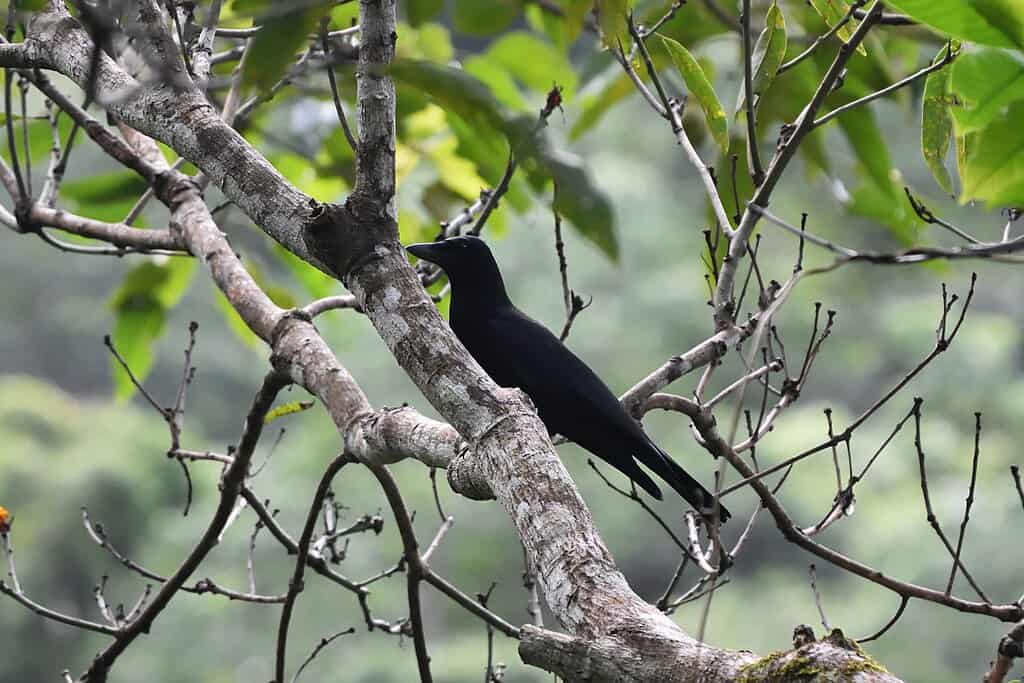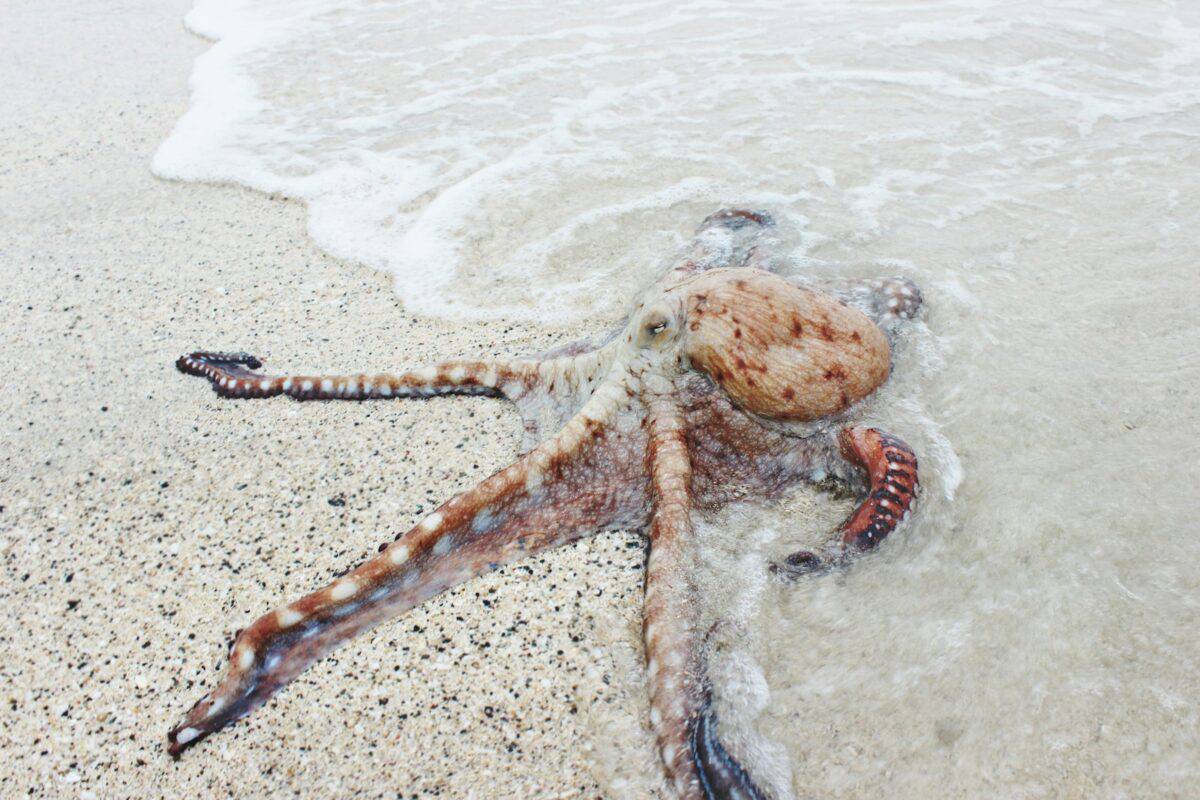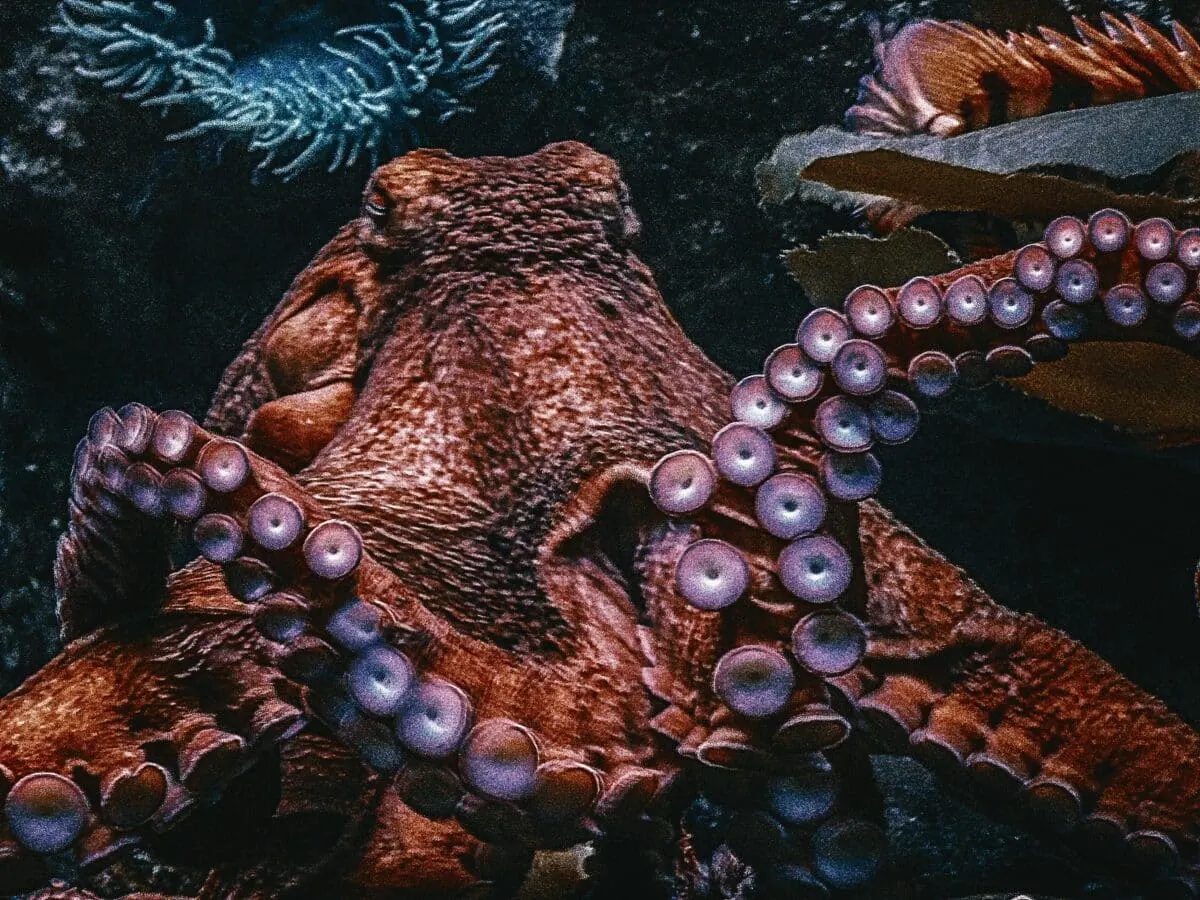Nature’s blueprint for survival extends beyond genetic inheritance, encompassing the transmission of crucial knowledge across generations. While we often associate culture and education exclusively with humans, numerous species have evolved sophisticated systems of generational learning. These animals demonstrate that the ability to communicate acquired wisdom is a powerful evolutionary advantage. From the intricate songs of whales to the tool-using prowess of primates, generational knowledge transfer shapes animal societies and helps them adapt to changing environments. In this article, we explore 13 remarkable species that have developed methods to pass down vital survival skills, social norms, and practical knowledge from one generation to the next.
13. Orcas (Killer Whales) Ocean’s Cultural Sophisticates

Orcas possess one of the animal kingdom’s most sophisticated cultural systems, with distinct pods developing unique hunting techniques that are taught to younger generations. Research has documented dramatically different hunting strategies across pods, even when they inhabit the same waters. In the waters off New Zealand, some pods have mastered the art of beaching themselves temporarily to catch seals on shorelines, deliberately teaching this risky technique to their calves through careful demonstration and supervised practice. Meanwhile, Antarctic orcas have developed “wave-washing,” creating artificial waves to knock seals off ice floes. Remarkably, these distinct “cultural traditions” persist for generations, with calves adopting the exact techniques of their pod rather than developing their own methods. This specialized knowledge transmission doesn’t just affect hunting—it extends to unique vocalizations that act as pod “dialects,” migration patterns, and social structures, effectively creating distinct orca cultures throughout the world’s oceans.
12. Chimpanzees Tool Usage Traditions

Chimpanzees exhibit remarkable cultural transmission of tool use that varies significantly between communities across Africa. In Tanzania’s Gombe Stream National Park, young chimps spend years watching adults fashion fishing tools from twigs, gradually learning the precise technique for extracting termites from mounds. The Tai Forest chimpanzees of the Ivory Coast pass down sophisticated stone tools used for cracking nuts, a complex skill requiring years of observation and practice. Research by primatologist Crickette Sanz found that mothers actively demonstrate proper tool techniques to infants, even temporarily slowing their own efficiency to provide clearer demonstrations. Different chimp groups maintain entirely separate tool “cultures” – some use stones as hammers, others use leaves as sponges to collect water, while still others have developed specialized techniques for harvesting honey from beehives. These distinct traditions persist across generations, with young chimps faithfully reproducing the specific techniques of their community rather than developing their own methods, demonstrating true cultural transmission.
11. Bottlenose Dolphins Marine Tool Teachers

Bottlenose dolphins in Shark Bay, Australia, have developed a remarkable cultural tradition known as “sponging,” where certain dolphins use marine sponges as protective nose covers while foraging on the seafloor. This sophisticated tool use isn’t genetic but learned behavior, primarily passed from mothers to daughters through years of close observation and practice. Studies by Georgetown University researcher Janet Mann have tracked this tradition across multiple generations, finding that daughters of “spongers” adopt the technique with 93% consistency. Even more fascinating is that this knowledge transmission has created distinct dolphin cultural groups within the same habitat, with “spongers” forming stronger social bonds with other tool-users. Other dolphin communities worldwide have developed unique feeding strategies—from coordinated beach hunting in South America to mud-ring feeding in Florida—all transmitted through social learning rather than instinct. This cultural diversity in dolphin communities provides compelling evidence that these marine mammals maintain and propagate sophisticated knowledge systems across generations.
10. Elephants Memory Keepers of the Savanna

Elephant matriarchs serve as living repositories of essential survival knowledge for their herds, with some studies suggesting they can remember specific migration routes and water sources for over 50 years. During Botswana’s severe 1993 drought, herds led by older matriarchs demonstrated significantly higher calf survival rates than those with younger leaders, as the experienced females recalled distant water sources from previous droughts. Research by Karen McComb at the University of Sussex revealed that elephant groups with older female leaders respond more appropriately to predator threats, recognizing the specific dangers posed by different predators. This knowledge isn’t instinctual but accumulated and shared through decades of observation. Perhaps most poignantly, elephants transmit cultural norms through generations, including mourning rituals for deceased herd members, specific communication patterns, and problem-solving strategies. Young elephants spend up to 15 years under intense maternal guidance, observing and internalizing these cultural traditions. This sophisticated knowledge transfer system creates distinct “cultures” among elephant populations across Africa and Asia, with herds maintaining unique behavioral traditions that persist across generations.
9. Humpback Whales Songs Across Generations

Humpback whales possess one of the most complex cultural systems among non-human species, centered around their elaborate songs that function as a form of cultural transmission. Male humpbacks produce intricate songs that can last up to 30 minutes, containing precise patterns of moans, cries, and other vocalizations. Remarkably, all males within a particular ocean region sing the same song version at any given time, but these songs gradually evolve each breeding season. Research by marine biologist Ellen Garland documented how song patterns originate in waters off eastern Australia and progressively travel eastward across the Pacific, with whale populations sequentially adopting new versions—a genuine cultural revolution spanning thousands of miles. Beyond songs, humpbacks pass down specific migration routes and feeding techniques generationally. One particularly striking example is “bubble-net feeding,” where whales coordinate to blow bubble rings that trap fish. This learned behavior requires precise coordination and is found only in certain populations. Young whales acquire these sophisticated techniques through years of observation, demonstrating how culture and learning fundamentally shape whale societies across oceans and generations.
8. Orangutans Forest Knowledge Networks

Orangutans maintain some of the longest learning periods in the animal kingdom, with offspring staying with their mothers for up to eight years to absorb crucial survival knowledge. Studies in Sumatra and Borneo have documented how mothers methodically teach their young to identify over 200 different food sources, including which plants are safe, which are medicinal, and how to process those containing toxins. Research by primatologist Carel van Schaik revealed significant regional variations in orangutan tool use that correlate with social learning opportunities rather than ecological factors. In some regions, orangutans use sticks to extract seeds from needed fruits or fashion leaf “gloves” to handle spiny fruits. At the same time, these techniques are absent in other populations despite similar environments. The “cultural geography” of these skills isn’t random—they cluster around areas with more opportunities for social observation. Perhaps most remarkably, orangutans demonstrate medicinal plant knowledge, with mothers showing offspring how to chew specific leaves and apply the resulting paste to sore muscles—knowledge that has taken generations to accumulate and verify. These sophisticated learning networks may help explain how orangutans have survived in challenging rainforest environments for millions of years.
7. Meerkats Desert Survival Schools

Meerkats have developed a structured teaching system that prepares their pups for the hazards of desert life through progressive lessons. Adult meerkats deliberately introduce young to hunting skills through a carefully calibrated curriculum—beginning with dead prey, then disabled live prey, and finally fully active prey as the pups develop. Research by Alex Thornton at the University of Cambridge documented how adults modify their teaching based on the pups’ age and skill level, providing more assistance to struggling learners. This teaching extends beyond hunting to sentinel behavior, with adults demonstrating proper vigilance techniques and alarm calls that distinguish between aerial and ground predators. Young meerkats must learn to recognize over a dozen distinct alarm calls and the appropriate response to each. What makes this system particularly remarkable is that unrelated adults will participate in teaching, suggesting a community investment in knowledge transmission. This sophisticated educational system helps explain how meerkats thrive in one of Africa’s harshest environments, with generational knowledge transfer creating a flexible adaptation mechanism that pure instinct couldn’t provide.
6. Rats Urban Survival Wisdom

Rats possess surprisingly sophisticated cultural transmission systems that help them navigate the dangers of urban environments across generations. Studies by neuroscientist Nathan Insel demonstrated that mother rats actively teach their pups about safe foods through both prenatal and postnatal cues. When pregnant rats consume particular foods, compounds from those foods reach the developing pups, creating familiarization that later influences their food preferences. Additionally, juvenile rats observe adults’ food choices and eating patterns, adopting these preferences even when they contradict their individual experiences. This cultural transmission extends to predator avoidance and navigation. Research at the University of Washington showed that rat colonies maintain shared knowledge about dangerous areas and safe routes through their environments, with this information passing between generations through observational learning. Perhaps most impressively, rats in urban environments have developed culturally transmitted techniques for opening specific types of containers and accessing particular food sources—skills that vary between different city populations. This cultural transmission helps explain rats’ exceptional adaptability and success in human-dominated landscapes worldwide.
5. New Caledonian Crows Avian Craftsmen

New Caledonian crows have developed one of the most sophisticated tool-making cultures in the animal kingdom outside of primates, with skills transmitted through careful intergenerational teaching. These remarkable birds craft complex hooked tools from pandanus leaves and twigs, fashioning implements precisely shaped for extracting grubs from tree crevices. Research by behavioral ecologist Christian Rutz documented how adult crows demonstrate proper tool-crafting techniques to juveniles, who spend nearly two years practicing before achieving adult-level proficiency. Different crow populations across New Caledonia maintain distinct tool “traditions” that remain stable across generations—some groups craft wide tools, others narrow ones, with specific design features persisting within lineages. Experiments using captive crows revealed that juveniles learn primarily through observation rather than trial-and-error, focusing intently on adult demonstrations and attempting to replicate their specific techniques. This cultural transmission has created regional “technological traditions” among crow populations, with certain tool designs existing only in specific valleys despite similar ecological conditions elsewhere. This sophisticated knowledge transfer system challenges traditional distinctions between human and animal cultures, demonstrating how avian intelligence has evolved complex teaching mechanisms that maintain accumulated knowledge across generations.
4. Brown Bears Salmon Fishing Traditions

Brown bears in Alaska’s Kodiak Island and Brooks River have developed distinct fishing techniques that are transmitted culturally across generations rather than being purely instinctual. Cubs spend up to three years with their mothers, during which they observe and gradually master specific fishing strategies suited to their local environments. Research by behaviorist Volker Deecke documented how different bear populations maintain distinct fishing “traditions”—some specialize in ambush techniques from riverbanks, and others wade into rapids to catch leaping salmon. In contrast, still others focus on scavenging partially eaten fish. These techniques vary between regions despite similar river conditions, suggesting cultural rather than environmental determination. GPS tracking studies show that bears raised in specific fishing locations return to these same spots as adults, maintaining family traditions across generations. Beyond fishing techniques, mother bears transmit crucial knowledge about hibernation site selection, plant food identification, and predator avoidance strategies. This cultural transmission system helps explain the remarkable success of brown bears across diverse northern habitats, with learned behavior providing the flexibility that genetic programming alone couldn’t achieve.
3. Honeybees Collective Wisdom Through Dance

Honeybees maintain one of nature’s most sophisticated knowledge transmission systems, using the famous “waggle dance” to communicate precise foraging information across generations. This remarkable communication system, decoded by Karl von Frisch in the 1940s, allows successful foragers to convey the distance, direction, and quality of food sources to hive mates through precise movements. What’s particularly fascinating is how this knowledge flows across bee generations—studies at the University of Sussex revealed that novice foragers follow experienced dancers on their first flights, learning both the dance language and navigation skills simultaneously. Research by Thomas Seeley demonstrated that colonies maintain a “collective memory” of reliable food sources, with this information persisting even as individual bees die and are replaced. The dance language itself shows regional variations, with distinct “dialects” existing in different geographical populations. When colonies split during swarming, the new colony carries the accumulated foraging knowledge of the parent hive. This sophisticated cultural transmission system helps explain how honeybees have become one of Earth’s most successful pollinators, using social learning to maintain crucial environmental knowledge across ever-changing generations of short-lived individuals.
2. Bighorn Sheep Migration Memory Keepers

Bighorn sheep maintain complex migration knowledge that is culturally transmitted rather than genetically programmed, with older females serving as repositories of crucial route information. Research by biologist Brett Jesmer at the University of Wyoming demonstrated this dramatically through a natural experiment—when bighorn sheep were reintroduced to areas where local populations had been extirpated, the transplanted sheep initially didn’t migrate at all, despite suitable seasonal habitats existing nearby. Only after approximately 40 years did these populations develop effective migration patterns as knowledge accumulated and spread through the group. GPS tracking studies have shown that young females specifically follow older, experienced ewes during their first migrations, internalizing precise routes that they’ll later lead themselves. This knowledge includes specific high-mountain pathways, predator avoidance strategies, and timing aligned with plant growth patterns. Different bighorn populations maintain distinct migration traditions, with some traveling over 150 miles while others move shorter distances but navigate more challenging terrain. This cultural transmission system demonstrates how ungulates maintain sophisticated environmental knowledge across generations, creating living information networks that help these mammals thrive in challenging mountain environments.
1. Octopuses Surprising Social Learners

Despite their relatively short lifespan and traditional classification as solitary animals, recent research reveals that certain octopus species engage in sophisticated social learning that constitutes a form of cultural transmission. Studies at Macquarie University documented how octopuses in Jervis Bay, Australia, gather in small groups where they observe and mimic the behaviors of experienced individuals. Young octopuses have been recorded watching older ones extract prey from difficult shells, later replicating the exact technique rather than developing their own methods. This observational learning extends to predator avoidance strategies, with octopuses adopting specific escape responses after watching conspecifics’ interactions with predators. Perhaps most remarkably, different octopus aggregations maintain distinct “local traditions” in their hunting techniques and shelter construction methods that persist across generations despite complete population turnover every few years. This unexpected discovery of cultural transmission in invertebrates suggests that the cognitive capacities for social learning and cultural maintenance evolved independently in multiple animal lineages. The octopus example demonstrates that generational knowledge transfer doesn’t require long lifespans or extended parental care but can occur through brief but intense observational learning periods.
The Profound Implications of Animal Culture

The diverse examples of knowledge transmission across these 13 species fundamentally challenge our understanding of animal cognition and the uniqueness of human culture. These sophisticated learning systems demonstrate that cultural transmission isn’t exclusively human but represents a powerful adaptive strategy that has evolved independently across widely divergent animal lineages. The existence of these teaching traditions carries profound conservation implications—when we lose animal populations, we lose not just genetic diversity but irreplaceable cultural knowledge accumulated over countless generations. This emerging understanding of animal culture should reshape how we view our fellow creatures, recognizing them not merely as genetically programmed organisms but as bearers of tradition, teachers of accumulated wisdom, and participants in learning communities that span generations. As we continue exploring the rich complexities of animal cognition, we may discover that the capacity to learn from previous generations and teach future ones is among the most fundamental and widespread adaptations in the living world.
- 11 Signs a Rhino Is About to Charge - August 9, 2025
- 10 Common Chicken Behaviors and What They Mean - August 9, 2025
- 14 Creatures That Can Freeze and Thaw Back to Life - August 9, 2025

